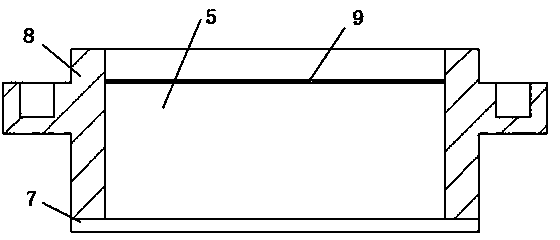Bionic zoom lens and driving device thereof
A zoom lens and driving device technology, applied in the field of bionic machine vision, can solve the problems of complex structure, limited response speed, poor optical axis stability, etc., and achieve the effect of good imaging quality, rapid response, and stable optical axis
- Summary
- Abstract
- Description
- Claims
- Application Information
AI Technical Summary
Problems solved by technology
Method used
Image
Examples
Embodiment Construction
[0025] The following will clearly and completely describe the technical solutions in the embodiments of the present invention with reference to the accompanying drawings in the embodiments of the present invention. Obviously, the embodiments described below are some, not all, embodiments of the present invention. Based on the embodiments of the present invention, all other embodiments obtained by persons of ordinary skill in the art without making creative efforts belong to the protection scope of the present invention.
[0026] Such as Figure 4 As shown, a bionic zoom lens includes a double cemented dioptric objective lens 3 at the front end and a colloid lens 5 at the rear end; the double cemented dioptric objective lens 3 is used as the first lens unit of the zoom lens to pre-refract the light, It is made of a low-dispersion double-convex positive lens and a highly-dispersive concave-convex negative lens, and its diopter is 40D; the colloid lens 5 is used as the second len...
PUM
 Login to View More
Login to View More Abstract
Description
Claims
Application Information
 Login to View More
Login to View More - R&D
- Intellectual Property
- Life Sciences
- Materials
- Tech Scout
- Unparalleled Data Quality
- Higher Quality Content
- 60% Fewer Hallucinations
Browse by: Latest US Patents, China's latest patents, Technical Efficacy Thesaurus, Application Domain, Technology Topic, Popular Technical Reports.
© 2025 PatSnap. All rights reserved.Legal|Privacy policy|Modern Slavery Act Transparency Statement|Sitemap|About US| Contact US: help@patsnap.com



